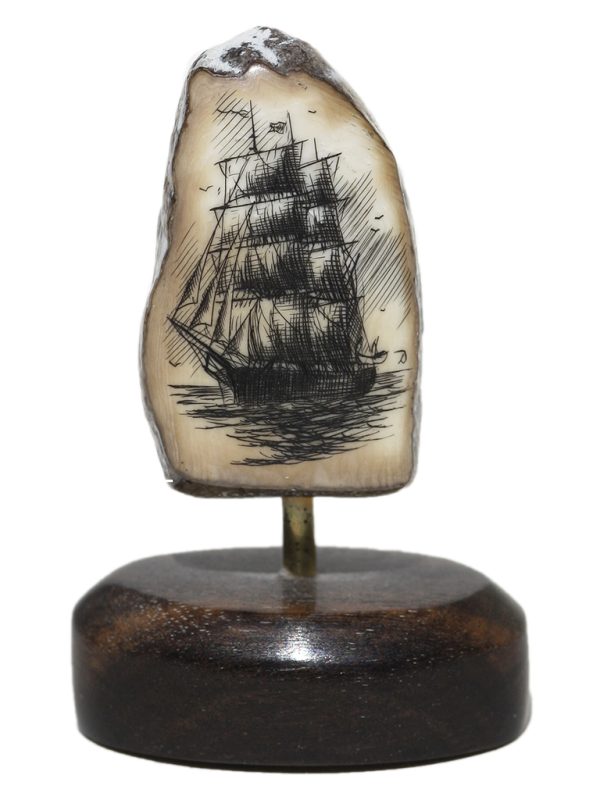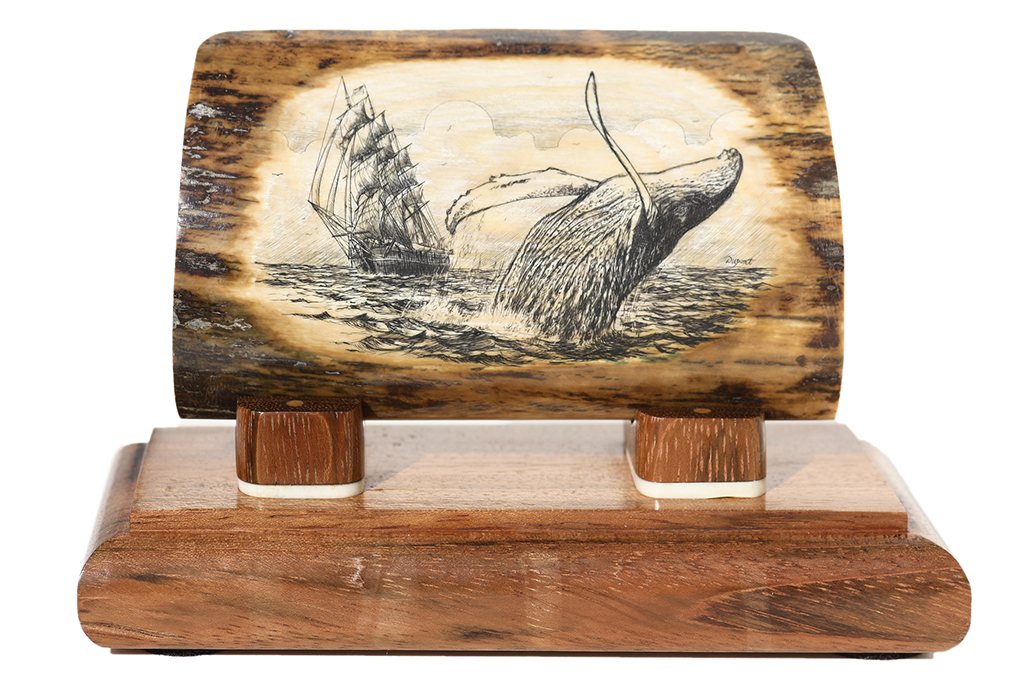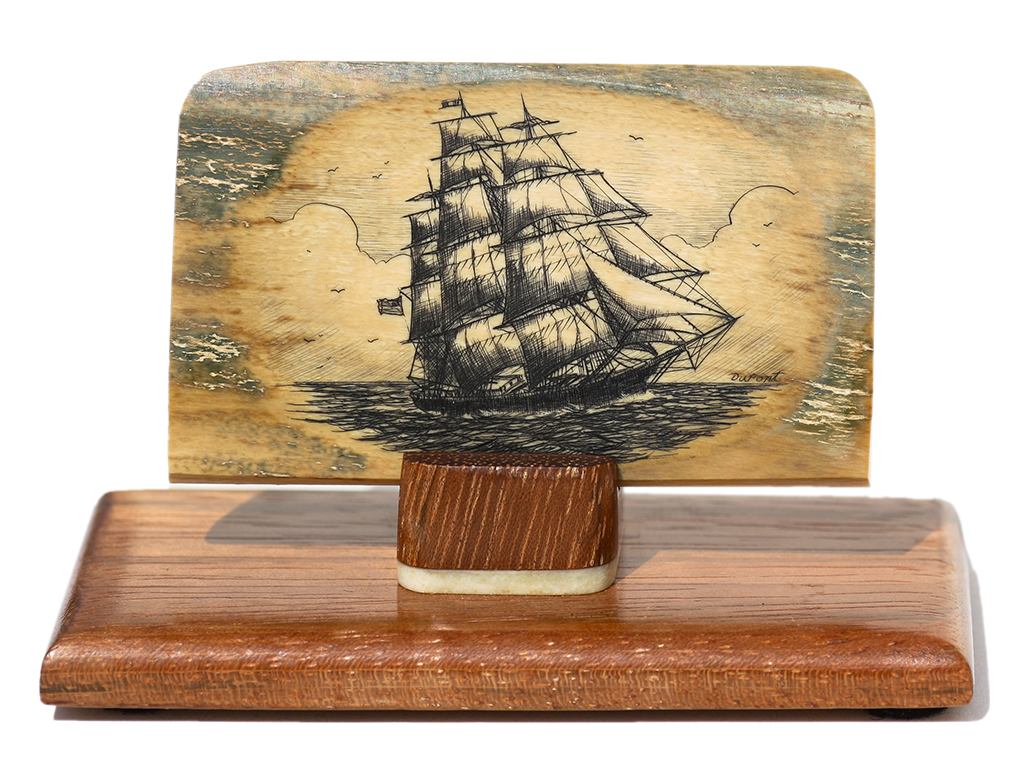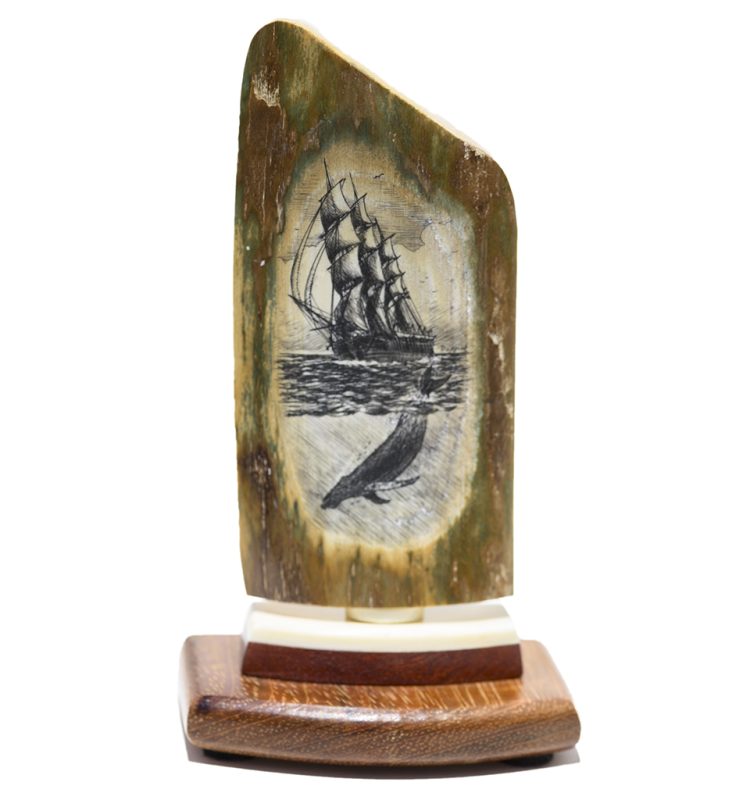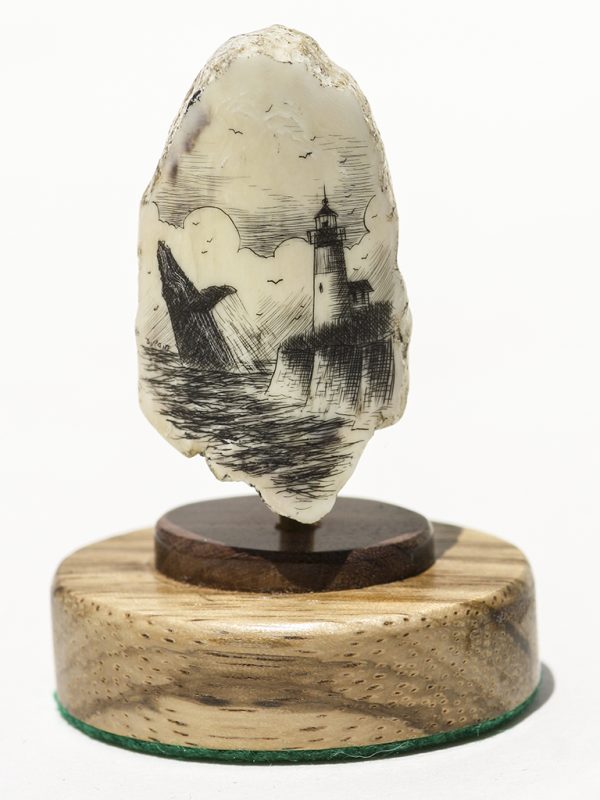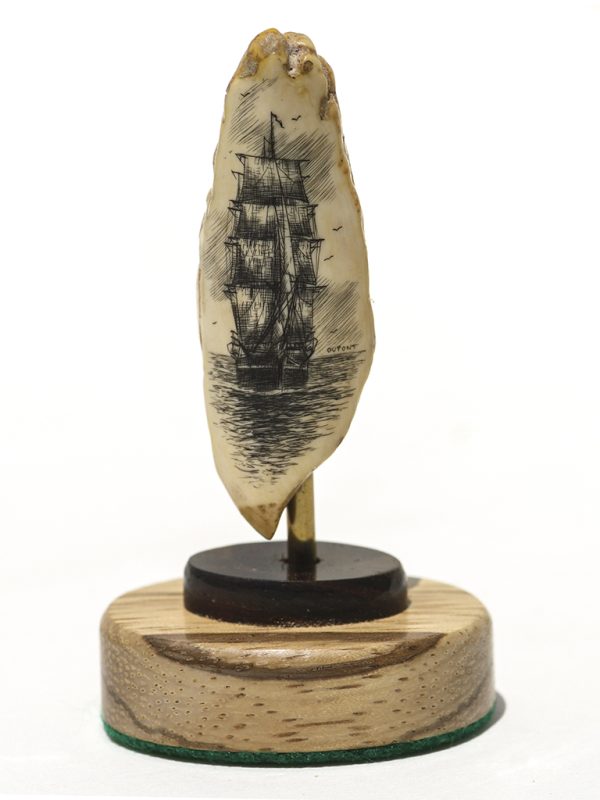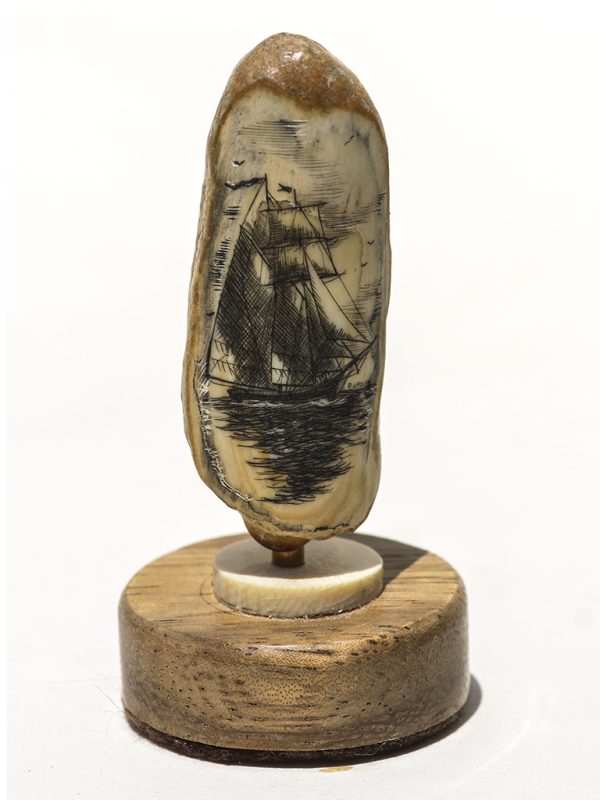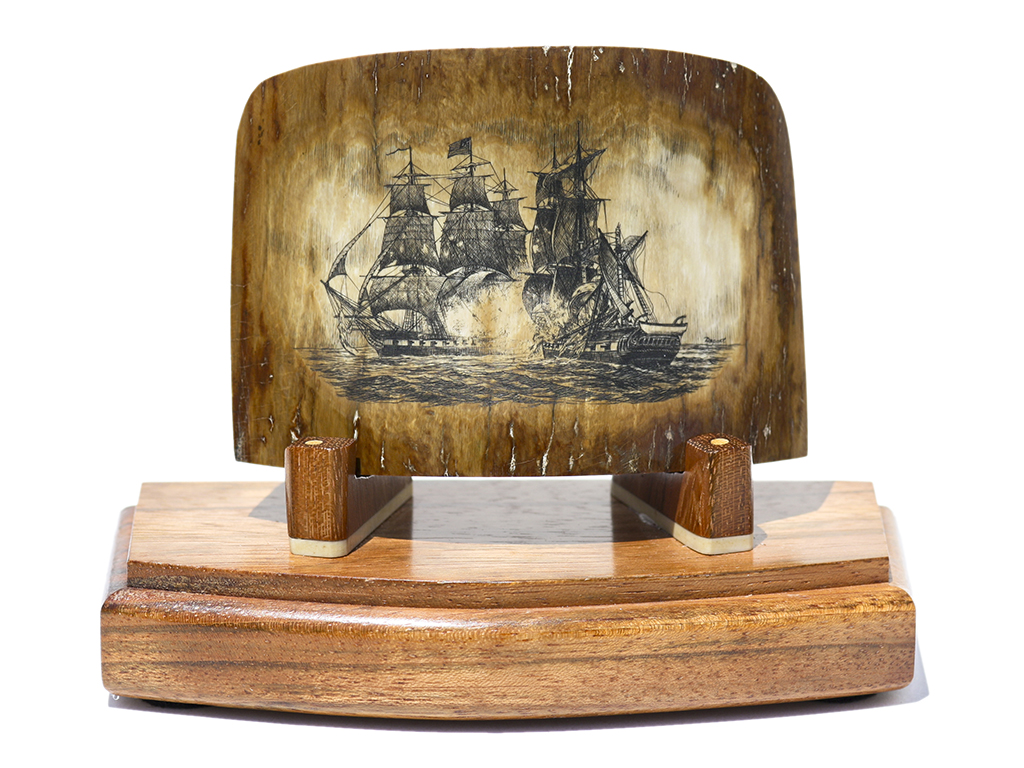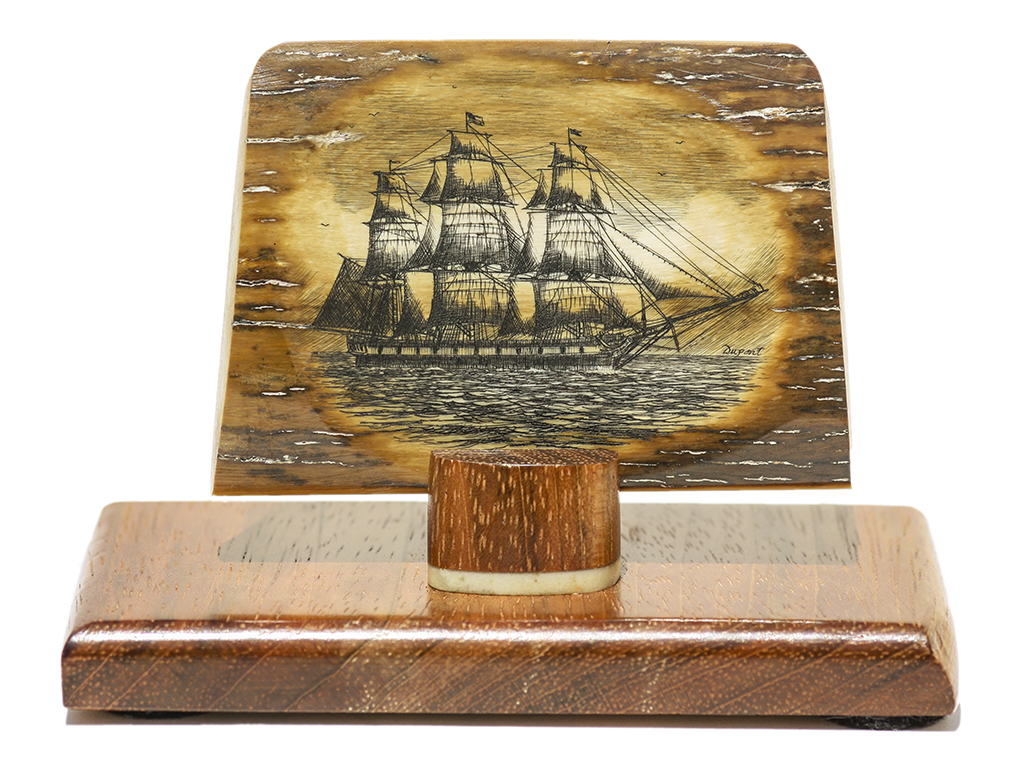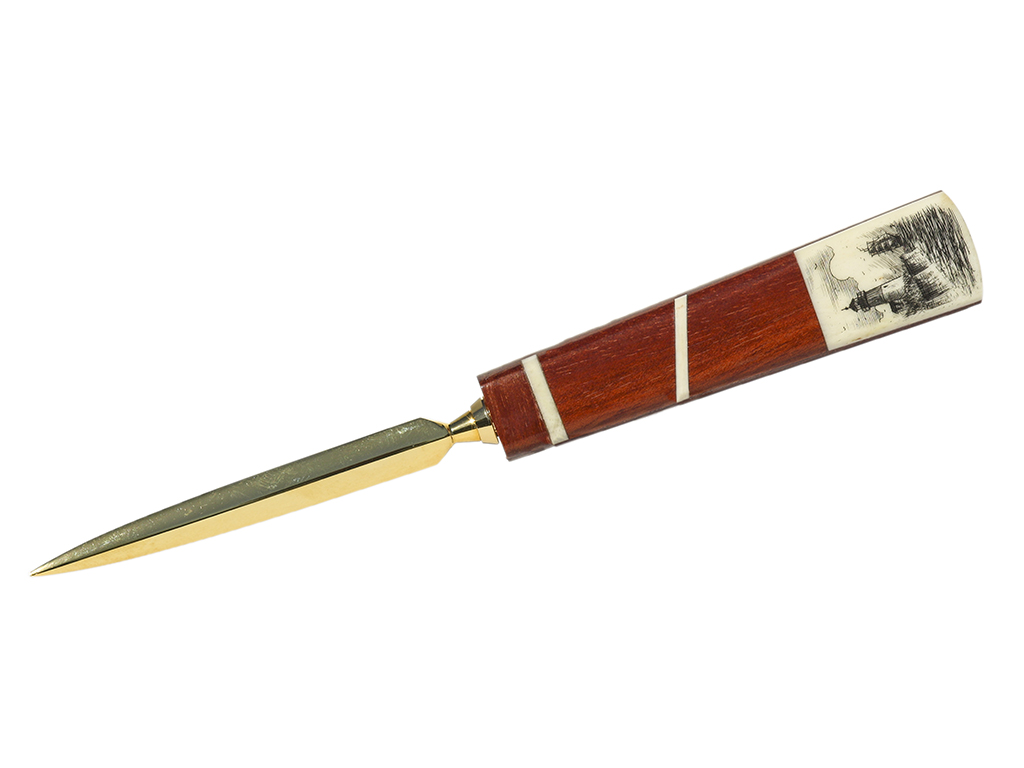“Clipper Returning Home” black and white scrimshaw on ancient walrus tooth ivory by Gerry Dupont. Nicely shaped tooth perfect for Dupont. Great price for this gem.Not much of this type of ivory around today.
“Breaching Humpback and Ship” black and white scrimshaw on ancient mammoth ivory bark by Gerry Dupont. Racing whaler bypasses this humpback. Must have been going for something else that day. Very large, thick piece of mammoth bark and Dupont has taken full advantage of the working surface. Don’t get many this size at such a great price. Winner all the way around.
“Clipper Heading to San Francisco” black and white scrimshaw on ancient mammoth tusk ivory by Gerry Dupont. Most of the 49’ers came this way. Often, the entire crew would jump ship to seek their fortunes as well. At one time, there were over 700 abandoned vessels in San Francisco Bay.
“Whaler Niger Working” black and white scrimshaw on ancient mammoth tusk ivory bark by Gerry Dupont. Nice composition as Dupont has the masts in the higher corner. He always studies the ivory before beginning Also, he has used the entire workable surface of the mammoth ivory. A fine addition to any collection. Nice stand completes the picture.
“Whale and Lighthouse” black and white scrimshaw on ancient walrus tooth ivory by Gerry Dupont. Curious whale wants to look around. Humpbacks are known to do this simply to find their bearings. Nice work by Dupont, as usual.
“Morgan Returning Home” black and white scrimshaw on ancient walrus tooth ivory by Gerry Dupont. Famous whaler Charles W. Morgan returns to port after a long and successful voyage. Excellent composition for this slim walrus tooth, but one would expect that of Dupont.
Black and white scrimshaw on ancient walrus tooth ivory by Gerry Dupont. Excellent rendition of a famous brigantine by scrimshander, Dupont. The entire surface has been worked as Dupont always does a first class job. Professional.
“Constitution vs. Java” black and white scrimshaw on ancient mammoth ivory bark by Gerry Dupont.
On December 29, 1812, while cruising off the coast of Brazil, USS Constitution’s masthead lookout sighted two ships on the horizon. Constitution, under the command of Commodore William Bainbridge, stood toward them, and the larger of the two, HMS Java, tacked toward the Americans.
Java, a 38-gun frigate (but mounting 47) commanded by Captain Henry Lambert, maneuvered to close with Constitution. The Americans opened fire as the range decreased, but the gun crews had difficulty hitting their target. Soon, Java ranged alongside Constitution and the battle commenced. As the two ships maneuvered to rake each other, Java suddenly turned under the American’s stern and fired. British shot smashed Constitution’s wheel and wounded or killed the four quartermasters manning it. The same broadside shattered a railing surrounding the after hatchway, embedding a shard of copper in Bainbridge’s thigh. Despite his wound, Bainbridge rallied his crew. To regain control of the ship, crew members were sent to the berth deck to steer the ship using the tiller directly connected to the rudder. The heavy American shot, coupled with the defensive properties of Constitution’s thick hull, began to turn the tide of battle. Captain Lambert decided to board the American frigate, and aimed Java’s shattered bow at Constitution. As the two ships neared, American shot toppled Java’s foremast and the boarding attempt failed. Soon after, Lambert received a mortal wound in the chest.
The Americans fired several more broadsides and then stood off out of range to repair damaged rigging. On Java, the devastation was complete with her three masts and bowsprit damaged, and many of her guns inoperable. An hour later, Constitution swept back and took up a raking position off Java’s bow. First Lieutenant Henry Ducie Chads surrendered the ship for Constitution’s second victory of the War of 1812.
After removing the British prisoners, Bainbridge determined that he could not tow Java to an American port. A demolition party lit fires in Java’s hold, causing the magazine to explode. Although Constitution suffered damage to her rig and hull, the ship made Boston on February 15, 1813. News of the victory had arrived six days before, and the city was ready to welcome its heroes. When the news reached England, the British Admiralty took steps to ensure that no more of their frigates would fall victim to the Americans. In July 1813 they issued orders forbidding their captains from engaging American frigates one on one.
“C.W. Morgan at Sea” black and white scrimshaw on ancient mammoth ivory bark by Gerry Dupont. Fine depiction of the Charles W. Morgan by Dupont. Smooth sailing appears to be the order of the day. However, dangerous clouds appear to be closing in with darkness in the mammoth ivory creating the impression. Great work by one of the best in the field today. Nice stand, nice ivory and nice price.
“Scrimshaw Letter Opener” Black and white scrimshaw on ox bone by Gerry Dupont. Handsome letter opener features ox bone inlaid into rich blood wood. Handle is 4″L. Perfect gift for anyone, especially those interested in maritime art. Because this is oxbone, not ivory, we can ship to all 50 states.

